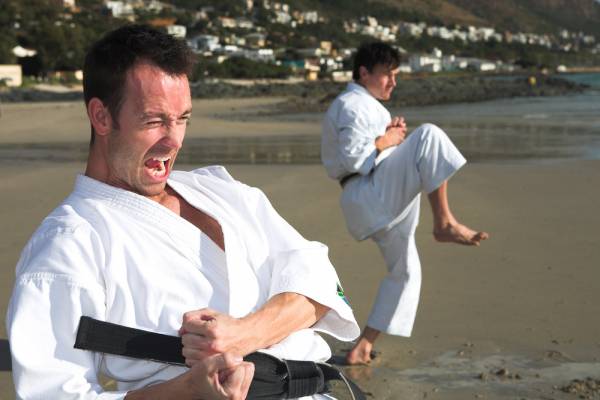If you’re around my age, you might remember the old Saturday Night live skit, “At Home with Monica Seles.” In the skit, much fun was made of the way the former tennis great would emit loud grunts on the court during her matches. SNL did a spot-on job mimicking those grunts while showing her doing mundane tasks like opening the refrigerator door. Indeed Seles got a little carried away with her shrieks and screams and opponents sometimes even mocked or replicated the grunts, as if saying they weren’t impressed or intimidated.
It’s long been thought that athletes, martial artists, and fighters grunt and make noise as a source of intimidation. There is certainly some truth to the assertion. Sudden loud and jarring noises can throw one off their game – just ask a golfer. For most professionals, however, a noise is just a noise and part of the background, if noticed at all. For most performers who are on their game a noise or a camera flash isn’t even seen or heard.
So what is the deal with these grunts, yells, and screeches? The deal is the release of breath. And while Monica Seles perhaps went overboard, the release of breath is as vital a component of athletics and artistry as anything. In the martial arts this is lesson number one. One who can fight is one who can breathe, pure and simple. A huge part of breathing effectively is connecting to one’s center and releasing breath properly. Every martial art from karate to muay Thai to Western boxing uses such a breathing technique.
While it’s a relatively simple concept, it seems to be a tough one for many to grasp. We are often disconnected from our breath and you can literally see this difference in how people move and breathe. Have you ever sat next to a really heavy person and heard them breathe? You can hear the whisp of their thin breath and see their chest rise. In doing so, they are breathing inefficiently from their chests and as a result their body gasps for air.
But it isn’t just heavy people who breathe incorrectly. Even expert exercisers and athletes can breathe inefficiently. There are many who look fit despite this deficiency. While a person may look fit and even have a high level of fitness, it is hard if not impossible to truly move well without mastering the art of breathing.
 As someone who has coached and trained in boxing and in fitness for years, I’ve had difficulty at times getting this across to students. In a boxing gym, one should hear the “shh” whisper sound as boxers release breath with their punches. The “shh” sound is how boxers connect to the diaphragm and train their body to use breath efficiently. In muay Thai we use the sound “aish” for a roundhouse kick and in karate they use a sound called the kiai.
As someone who has coached and trained in boxing and in fitness for years, I’ve had difficulty at times getting this across to students. In a boxing gym, one should hear the “shh” whisper sound as boxers release breath with their punches. The “shh” sound is how boxers connect to the diaphragm and train their body to use breath efficiently. In muay Thai we use the sound “aish” for a roundhouse kick and in karate they use a sound called the kiai.
I’ve had many students who seemingly cannot or will not connect to their breath in this way. I say “breathe” many times a day as I am coaching, but this comment is often met with a perplexing look as if to say, “I am obviously breathing coach, I am above ground, aren’t I?” Clearly they are missing the point with such a response. Indeed, if you can’t breathe efficiently, you cannot move effectively.
If you’re struggling with the concept, start by finding a quiet place to stand still and place your hand on your stomach. As you inhale, feel and see your stomach push your hand out, counting to five. As you exhale, again count to five, slowly watching your hand come back in towards the body. As you do so, try practicing using a soft noise to connect to this exhalation. See Traver’s video for further demonstration:
Breathing correctly typically means one can see you breathe by how you move and it means one can hear you breathe correctly. For example, you simply cannot box without releasing breath. You cannot lift weights correctly or optimally without coordinating your breath. My sense in my experience over the years is that people do not understand or see how disconnected they are from their breath. The primary obstacle to breathing correctly seems to be a person’s lack of awareness of being truly connected to their breath. It takes practice and it also takes the willingness to work.
Such willingness leads me to a second obstacle to breathing effectively and efficiently – the ability to be open-minded and to truthfully observe ourselves. The reality is that many are too self-conscious to release their breath because of how they think others might look at them. Like an actor who’s job is being truthful in the moment, to do so comes at the risk of looking silly or foolish to others. When grunting and breathing, others will take notice and you become the center of attention. Many don’t like that spotlight. My response to that – suck it up, or rather, breathe it out.
Photos courtesy of Shutterstock.






